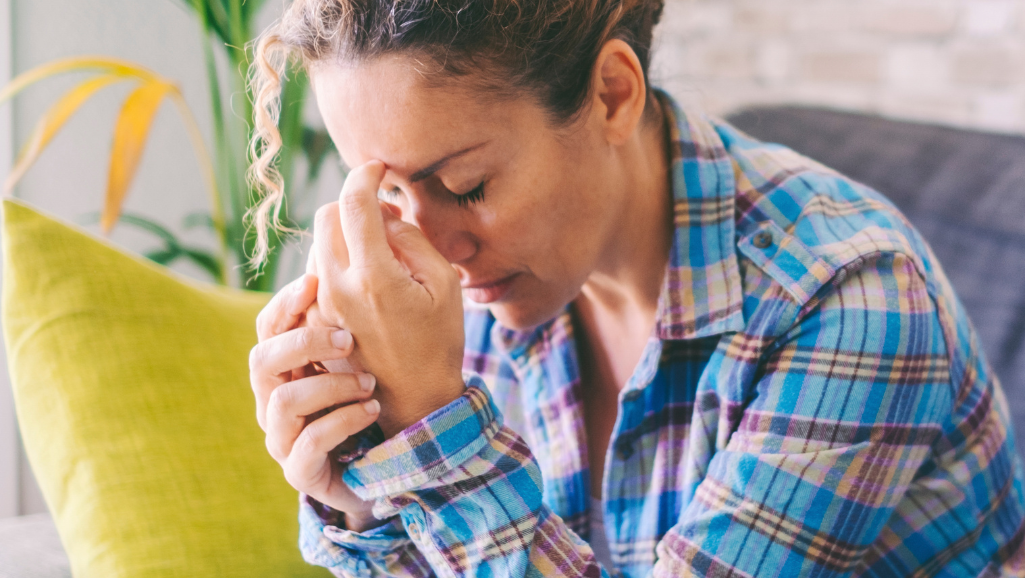Modern life often feels overwhelming. Many people struggle with daily pressures that affect their mental health. The good news? Simple, science-backed techniques can help.
Research shows 77% of Americans experience physical symptoms from chronic tension. Your body’s natural fight-or-flight response wasn’t designed for today’s constant demands. But you can retrain your reactions.
From breathwork to lifestyle changes, effective solutions exist. Many find relief through methods like mindfulness practices or building consistent daily routines. Small steps create big changes.
This guide shares practical ways to regain balance. You’ll discover how to transform your approach to challenges. The path to greater calm begins here.
Key Takeaways
- Modern triggers activate our natural stress responses
- Simple techniques can rewire how we handle pressure
- Physical activity boosts mood through natural chemicals
- Mindfulness practices help quiet racing thoughts
- Social connections provide powerful emotional support
- Healthy habits create a strong foundation for resilience
- Professional help offers personalized coping strategies
Understanding Severe Stress and Anxiety
That tightness in your chest? It’s your body sounding an alarm. When facing challenges, your system triggers ancient survival mechanisms. This response helped ancestors escape predators, but now reacts to emails and deadlines.
The Cortisol Cascade
Your adrenal glands release cortisol during demanding situations. This hormone increases heart rate by 38% according to the American Heart Association. The effects ripple through your body:
- Muscles tense for action
- Digestion slows dramatically
- Breathing becomes shallow
Chronic activation shrinks the prefrontal cortex by 8% (NIH studies). This brain region handles decision-making and focus.
Pressure Versus Persistent Worry
Stress typically links to specific events like presentations or bills. Anxiety often lingers without clear triggers. Key differences include:
“Stress is your body reacting to a challenge. Anxiety is your mind anticipating future threats.”
A middle school teacher overcame test anxiety through gradual exposure. She practiced timed quizzes in low-pressure settings first. Within months, her physical health improved alongside test scores.
Good news: Mindfulness practices can rebuild neural pathways in 8 weeks. Your brain remains adaptable throughout life. Simple techniques create lasting changes in how you handle pressure.
Recognizing the Symptoms of Severe Stress and Anxiety
Physical discomfort often speaks louder than words. Your body communicates through various signals when facing prolonged pressure. Learning these signs helps address challenges before they escalate.
When Your Body Sounds Alarms
Persistent headaches affect 91% of people under pressure, according to Cleveland Clinic research. Muscle tension frequently starts in the jaw, radiating to temples and shoulders.
Watch for these physical symptoms:
- Chest tightness lasting over 30 minutes
- Unexplained spikes in blood pressure
- Muscle stiffness that disrupts sleep
An ER nurse dismissed her irregular heart rhythm as fatigue. Months later, doctors linked it to chronic tension. “I ignored my body’s memos until it sent a certified letter,” she recalls.
The Mind’s Warning Lights
Behavior changes often precede conscious awareness of distress. Nail-biting or impulse shopping might signal brewing tension.
“Stress shopping filled my closet but emptied my peace of mind.”
Key emotional signs include:
- Irritability over minor issues
- Withdrawing from social connections
- Difficulty focusing on tasks
Stress-induced insomnia increases stroke risk by 54%. Recognizing early symptoms creates opportunities for timely intervention. Your body’s whispers today prevent screams tomorrow.
Common Causes of Chronic Stress and Anxiety
Modern work demands create silent storms in our nervous systems. The APA reports 61% of workers rank job pressure as their top stressor. From tight deadlines to unrealistic expectations, workplaces fuel tension.
Financial instability amplifies the strain. A $400 emergency bankrupts 44% of Americans, turning minor crises into major upheavals. “I juggled three jobs but still feared eviction,” shares a teacher from Ohio.
Digital overload worsens the problem. The average person spends 6.5 hours daily glued to screens. Notifications and emails blur work-life boundaries, making relaxation feel impossible.
“Caring for my mom while raising kids aged me 10 years in two. I forgot to care for myself.”
Generational differences shape struggles too. Gen Z battles climate anxiety, while Boomers worry about retirement savings. Racial disparities also play a role—Black individuals face three times higher stress from food insecurity than white peers.
Sleep deprivation creates vicious cycles. Missing just 90 minutes of rest spikes tension hormones by 37%. Building consistent routines helps break these patterns, one night at a time.
The Long-Term Effects of Unmanaged Stress
Unchecked pressure doesn’t just fade—it rewires your biology over time. UCSF research shows chronic tension ages immune cells 10+ years faster. Your defense systems weaken while inflammation markers rise.
When Pressure Becomes Pathology
High cortisol levels increase Alzheimer’s risk by 75%, per Neurology journal studies. This hormone storm damages brain cells like termites in woodwork.
Your heart pays the steepest price. Sustained tension erodes arteries like cigarette smoke. Blood pressure spikes become the new normal, straining vessels 24/7.
The gut-brain axis suffers too. Leaky gut syndrome often begins with prolonged tension. One study linked digestive disorders to workplace pressure in 68% of cases.
“Reversing metabolic syndrome felt impossible until I addressed my stress. Now my lab results look like I time-traveled.”
Reproductive health takes hits few discuss. Women under constant pressure see 32% fertility drops. Men experience testosterone crashes rivaling decade-long aging.
The financial toll stuns too. American businesses lose $300B yearly to stress-related absences. Your body’s receipts for unmanaged tension always come due—often with compound interest.
Proven Strategies to Reduce Stress and Anxiety
Small daily shifts create powerful changes in how you handle pressure. Science offers simple tools to reset your nervous system—no drastic overhauls required.
Breathing Exercises for Immediate Relief
Harvard research confirms 4-7-8 breathing reduces tension in 60 seconds. Inhale for 4 counts, hold for 7, exhale for 8. This triggers your body’s relaxation response.
Navy SEALs use box breathing (4-4-4-4) to stay calm under fire. A teacher practiced it during red lights: “My commute became my calm space.”
Diaphragmatic breathing activates the parasympathetic nervous system. Place one hand on your belly—feel it rise with each deep breath.
Lifestyle Changes That Make a Difference
The SMART trial found a Mediterranean diet lowers depression risk by 33%. Load up on omega-3s (salmon, walnuts) and magnesium (spinach, dark chocolate).
Exercise choices matter:
- Yoga eases racing thoughts with mindful movement
- HIIT burns off cortisol spikes in 20 minutes
“Swapping nightly wine for herbal tea improved my sleep more than any pill.”
Tech boundaries help too. A 2023 study showed app limits reduced digital fatigue by 41%. Try grayscale mode to make screens less stimulating.
When to Seek Help from a Mental Health Professional
Therapy isn’t just for crises—it’s preventive care for your mind. Research shows CBT (Cognitive Behavioral Therapy) has 70% success rates for managing persistent worries. You deserve support before reaching breaking point.
- Panic attacks occurring weekly or interfering with work
- Persistent sad or hopeless feelings lasting over two weeks
- Intrusive thoughts that disrupt daily functioning
“EMDR therapy helped me process trauma that talking couldn’t reach. I got my life back after the firehouse incident.”
Navigating insurance? Ask providers about superbills—detailed receipts you submit for reimbursement. Many therapists offer sliding-scale fees based on income.
Medication becomes an option when symptoms:
- Don’t improve with therapy alone
- Create significant risk to health or safety
- Involve biological factors like serotonin imbalance
Cultural competence matters. Some communities prefer faith-based counseling or family-involved sessions. A good mental health professional adapts to your background.
Teletherapy platforms offer convenient access to licensed therapists. Video sessions work well for busy schedules or rural areas. The key is finding what fits your life.
Remember: Seeking help demonstrates wisdom, not weakness. With the right support, even deep-rooted patterns can change.
Building Resilience Against Future Stress
Life throws curveballs, but resilience turns them into stepping stones. The Mayo Clinic found resilience training cuts burnout by 56%. Simple daily habits build mental armor for whatever comes next.
Start small with habit stacking. Pair your morning coffee with a 5-minute gratitude journal. These micro-rituals compound over time, creating unshakable foundations.
Reframe challenges using cognitive immunity. View setbacks as puzzles, not threats. A study in PLOS Medicine shows social support halves stress mortality risk. Book clubs and community groups work like mental health vaccines.
“Our emergency fund ladder saved us during layoffs. $500 first, then $1,000—small wins build confidence.”
At work, advocate for reasonable accommodations. Flex hours or task adjustments prevent burnout. Climate anxiety? Create action plans—even small changes like tree planting restore control.
Track your progress. Note three things you handled well each day. This reinforces capability feelings. Resilience isn’t about avoiding storms—it’s learning to dance in the rain.
Conclusion
Every challenge carries the seed of growth within it. You’ve now got tools to transform pressure into progress—one mindful breath, one healthy choice at a time.
Start today with this simple plan: Pause for three deep breaths when overwhelmed. Move your body daily, even just stretching. Connect with someone who lifts you up.
Remember, tough moments don’t define your life—they refine it. For extra support, explore mindfulness apps or local mental health groups. In crisis? The 988 Lifeline offers 24/7 help.
Your story isn’t about avoiding storms, but learning to dance in the rain. The first step begins now.











